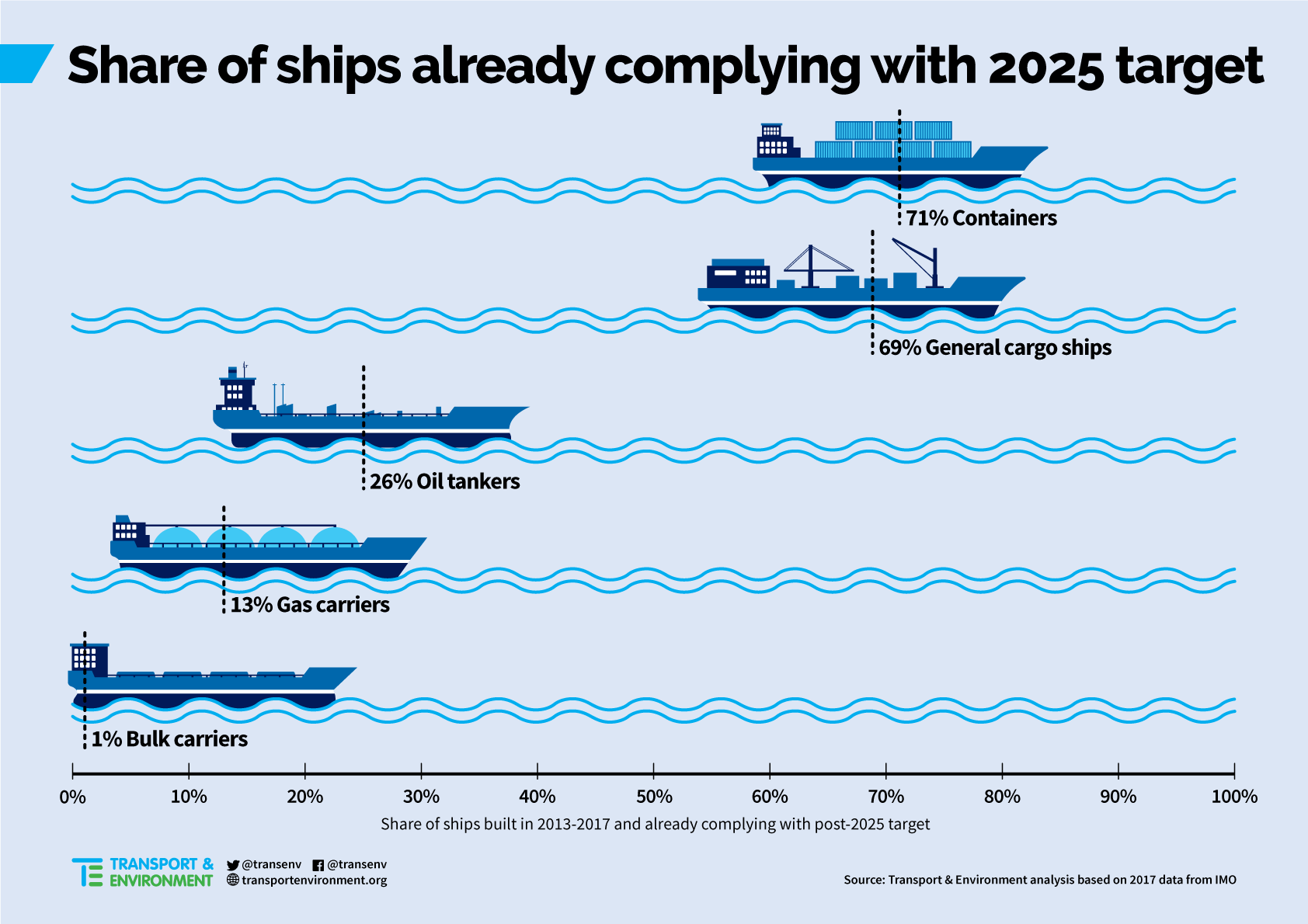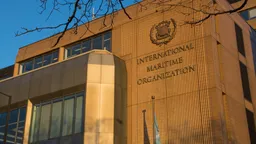
Interested in this kind of news?
Receive them directly in your inbox. Delivered once a week.
Faig Abbasov, shipping officer at T&E, said: “This new analysis using official IMO data confirms earlier findings presented to the IMO by environmental groups: the energy efficiency standard is not fit for purpose to drive better designs or technological innovation. Ship owners, represented by the International Chamber of Shipping and BIMCO, have opposed tighter standards as part of efforts to drain all ambition out of IMO discussions on how shipping can decarbonise. Strengthening the EEDI is the lowest of low hanging fruit. If the IMO can’t take timely action on this issue because of industry opposition, how can it be expected to deliver an adequate response to the Paris Agreement?”
The shipping sector as whole is one of the fastest growing sources of CO2 and could be responsible for more than 17% of global emissions by 2050 if no action is taken. Despite this, the International Chamber of Shipping (ICS) and BIMCO are claiming that the sector cannot accept any “commitment or intention to place a binding cap on either the international shipping sector’s total CO2 emissions or the CO2 emissions of individual ships”. ICS has argued that a lack of zero/low carbon technologies is the main obstacle. Yet less than 1% of the 2,500 new ships analysed in this study reported using even innovative energy efficiency technologies already available.
The study analysed ship types accounting for two-thirds of ship CO2 emissions and found that in addition to containerships, 69% of general cargo ships, 26% of new tankers and 13% of gas carriers exceed the EEDI’s 2025 requirements 10 years ahead of schedule. In general, the 10% best performing general cargo ships, tankers and gas carriers are respectively 57%, 35% and 42% more efficient than was required by the EEDI in the period 2013-2015. CSC believes that the performance of the best ships in the fleet would be a good place to start when revising existing or setting new EEDI requirements.
John Maggs, president of the CSC, said: “The EEDI’s current efficiency requirements are so weak that there is no incentive for the uptake of currently available innovative technologies, let alone the development of new technologies. Industry says it can only reduce its climate impact when low carbon technologies are available, but resists policies that will incentivise their development and deployment. You can’t have your cake and eat it. Something has to give.”


